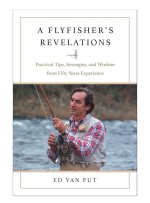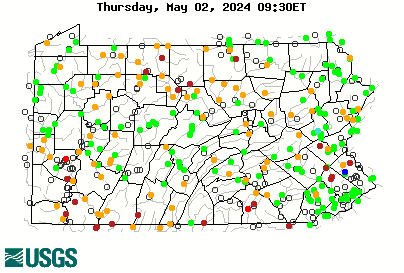Ed has always been my fishing hero. I first read of him in Art Lee's "Dry Fly Fishing in Rivers or Streams." In a chapter where Lee denigrates matching-the-hatch, he cites the example of Ed's reliance on the adams as proof against the exact copy of a mayfly. But it was the accompanying photo of Ed casting that blew my mind. To this day it's the best image of a flyfisher making a cast I've ever seen. You can see the mastery in the singular expression of concentration on his face, and I became a fan.
When I began to tie flies, I wrote to Ed and requested an adams to use as a model for my tying. He sent three of the finest catskill adams I'd ever seen. When I reviewed books for Midwestern Fly Fishing magazine some years later, Ed contacted me and sent a copy of "Trout Fishing in the Catskills," for review. We exchanged online banter, and I requested another adams, as his flies were lost either in trout or trees (shouldn't have done so, but they were so perfect that I used them to attract difficult risers).
"A Flyfisher's Revelations" has Ed revealing all of his fishing secrets - his presentationist philosophy and samples from his fishing journals.Included are patterns and tactics for wet fly, nymph and streamer fishing. Ed's flies are in the Catskill style. He uses no parachute flies, comparaduns, or bead heads in his armory. His dries are the adams, royal wulff, and pheasant tail nymph. The venerable old Zug-Bug is his nymph, tied in sizes 10 and 12. Top wet flies are also traditional: royal coachman and leadwing. Streamer is from Edson's "Flies," called a vamp, an all-white feather winged minnow.
To me, Ed was the coolest flyfisher of all time. His simple approach to trout tactics was my polestar. But over the years, I strayed from the presentationist creed. My driftless spring creeks - small, ultra-clear limestoners - often demanded flies that truly did "match-the-hatch." Nevertheless, much can be learned from "A Flyfishers Revelations," and the stories are entertaining. Ed tells the story of a trout he couldn't fool. Art Lee, who was fishing with him, teased Ed about his difficulty. All of Ed's previous offers were flies sent directly upstream of the trout's location. Finally, Ed flubbed a cast that went past the middle of the brown's feeding lane, and it snatched the fly. When Ed netted the fish he discovered it was blind in one eye, and only took the fly it could see, which was his flubbed cast.
I'm sad at Ed's recent passing. But I am so glad he left this wonderful testimony to a great life as a fly angler. Ed embodied my romantic ideal of a fly fisherman.
When I began to tie flies, I wrote to Ed and requested an adams to use as a model for my tying. He sent three of the finest catskill adams I'd ever seen. When I reviewed books for Midwestern Fly Fishing magazine some years later, Ed contacted me and sent a copy of "Trout Fishing in the Catskills," for review. We exchanged online banter, and I requested another adams, as his flies were lost either in trout or trees (shouldn't have done so, but they were so perfect that I used them to attract difficult risers).
"A Flyfisher's Revelations" has Ed revealing all of his fishing secrets - his presentationist philosophy and samples from his fishing journals.Included are patterns and tactics for wet fly, nymph and streamer fishing. Ed's flies are in the Catskill style. He uses no parachute flies, comparaduns, or bead heads in his armory. His dries are the adams, royal wulff, and pheasant tail nymph. The venerable old Zug-Bug is his nymph, tied in sizes 10 and 12. Top wet flies are also traditional: royal coachman and leadwing. Streamer is from Edson's "Flies," called a vamp, an all-white feather winged minnow.
To me, Ed was the coolest flyfisher of all time. His simple approach to trout tactics was my polestar. But over the years, I strayed from the presentationist creed. My driftless spring creeks - small, ultra-clear limestoners - often demanded flies that truly did "match-the-hatch." Nevertheless, much can be learned from "A Flyfishers Revelations," and the stories are entertaining. Ed tells the story of a trout he couldn't fool. Art Lee, who was fishing with him, teased Ed about his difficulty. All of Ed's previous offers were flies sent directly upstream of the trout's location. Finally, Ed flubbed a cast that went past the middle of the brown's feeding lane, and it snatched the fly. When Ed netted the fish he discovered it was blind in one eye, and only took the fly it could see, which was his flubbed cast.
I'm sad at Ed's recent passing. But I am so glad he left this wonderful testimony to a great life as a fly angler. Ed embodied my romantic ideal of a fly fisherman.





